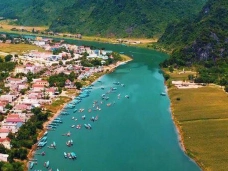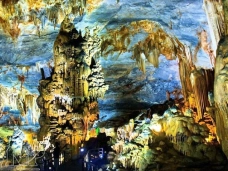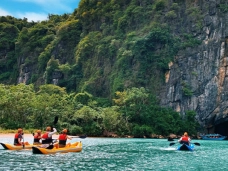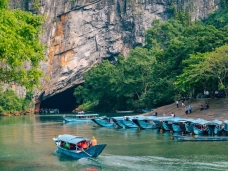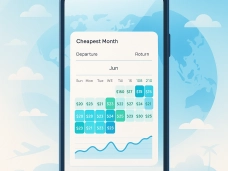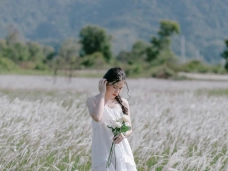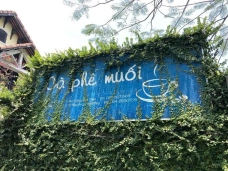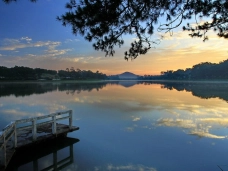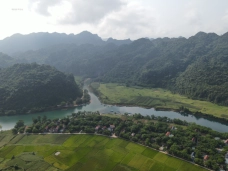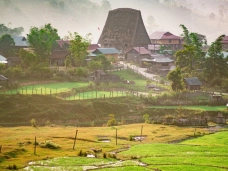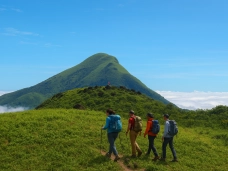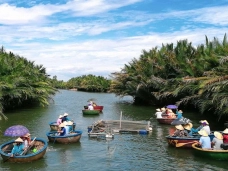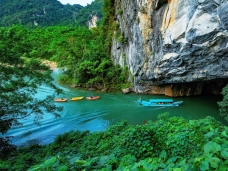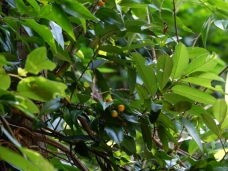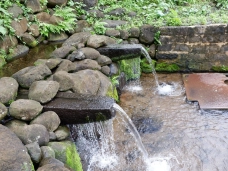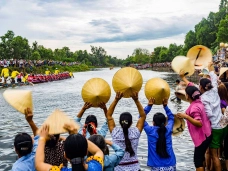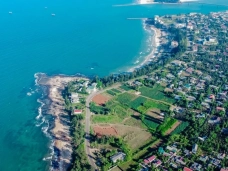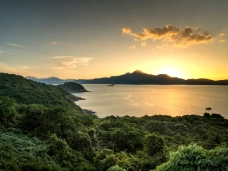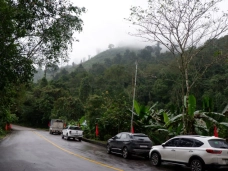Le Thuy – A Land of Living Heritage and Timeless Beauty
19-08-2025 15:51
Main contents
- 1. Ho Khoan Le Thuy Folk Singing & Traditional Craft Villages
- 2. The Traditional Boat Racing Festival on the Kien Giang River
- 3. Bang Hot Springs and the Refreshing Nuoc Lanh Stream
- 4. Dong Chau – Khe Nuoc Trong Nature Reserve
- 5. Hoang Phuc Pagoda – A 700-Year-Old Ancient Temple in Central Vietnam
- 6. Nguyen Huu Canh Tomb – Honoring the Pioneer of Southern Vietnam
- 7. Vo Nguyen Giap Memorial House – The Hometown of Vietnam’s Legendary General
- 8. Travel Tips for Visitors
Upon setting foot in Le Thuy, I immediately felt the magical harmony between nature and culture on this land of “sacred earth and talented people.”
Located in the southern part of former Quang Binh, Le Thuy boasts a diverse landscape of mountains, rivers, streams, fertile plains, and a coastline stretching nearly 30 km. Nature has been generous here: to the west lies the majestic Truong Son range, source of the winding Kien Giang River that nourishes the delta, while to the east stretch endless white sand dunes and pristine beaches. Beyond its natural beauty, Le Thuy proudly preserves a rich tapestry of cultural and historical traditions.
When speaking of Le Thuy, one cannot forget the poetic Kien Giang River, the unique Bang hot spring, and especially Ho khoan Le Thuy – the rustic folk singing that has become a cultural symbol of this land. Each year, on Vietnam’s National Day (September 2nd), also cherished locally as the “Independence Festival,” the river bursts into life with the traditional boat racing festival, attracting tens of thousands of locals and visitors. In 2019, this very festival was officially recognized as a National Intangible Cultural Heritage of Vietnam.
Le Thuy is also the proud homeland of many historical figures, such as Nguyen Huu Canh – the general who pioneered the expansion to the South, and General Vo Nguyen Giap – the legendary national hero. These legacies make the land truly “a cradle of great people.”
All together, they create the unique charm of Le Thuy – a homeland where breathtaking nature and timeless cultural heritage meet in perfect harmony.
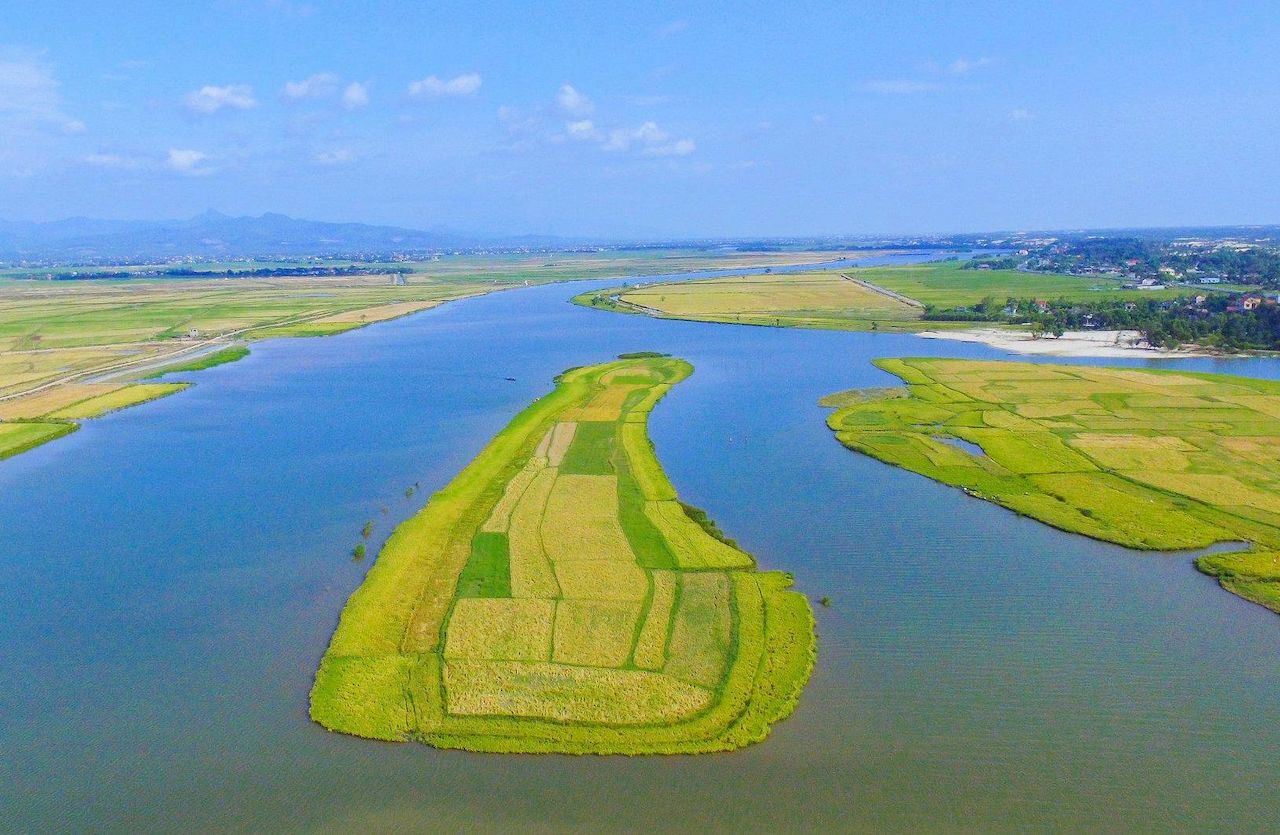
Ho Khoan Le Thuy Folk Singing & Traditional Craft Villages
On moonlit nights along the poetic Kien Giang River, the echoes of Ho khoan blend with the rhythmic sound of paddles striking the water, carrying the heartfelt emotions of the Le Thuy people. Ho khoan Le Thuy is a unique folk singing tradition closely tied to the daily life of local laborers. In the past, these melodies were sung while rowing boats, pounding rice under the moonlight, or during village festivals. With its rustic lyrics, playful call-and-response between men and women, and lively rhythms, Ho khoan vividly reflects the spiritual world of the working people.
The tradition features various “mai ho” (melodic styles) with charming names such as Mai Lia trau, Mai Nhai, Mai Ruoi, Mai Che, Mai Nen, Mai Ba, Mai Xap, Mai Ho Khoi, Mai Ho Nau Xam. In 2017, Ho khoan Le Thuy was officially recognized as a National Intangible Cultural Heritage of Vietnam. Though not as widespread as in the past, the people of Le Thuy are determined to keep it alive, passing it down to younger generations so that its rustic charm endures through time.
Beyond its folk music, Le Thuy is also home to centuries-old traditional craft villages. In An Xa village (Loc Thuy commune) – the hometown of General Vo Nguyen Giap – visitors can discover the craft of sedge mat weaving, a tradition that has lasted for over 600 years. Nestled by the fertile Kien Giang River, the village is surrounded by lush green sedge fields nourished by alluvial soil. Despite the ups and downs of history, An Xa’s mat weaving continues to thrive and remains a source of local pride. Each mat, durable and fragrant with dried sedge, is the result of generations of skilled artisans. Visitors can even try their hand at weaving on a traditional loom, guided by local masters, to truly appreciate the artistry behind every handmade product.
Alongside An Xa, Le Thuy is home to other renowned villages:
-
Quy Hau village (Lien Thuy commune) with its century-old conical hat making,
-
Xuan Bo village known for bamboo and rattan weaving,
-
Le Binh village specializing in broom making.
Each village preserves its own cultural essence. Travelers can visit local workshops, meet artisans, and even join in crafting hats, weaving mats, or making bamboo products. Souvenirs such as a pure white conical hat or a vividly patterned sedge mat not only serve as keepsakes, but also carry the soul, skill, and devotion of Le Thuy’s craftsmen.
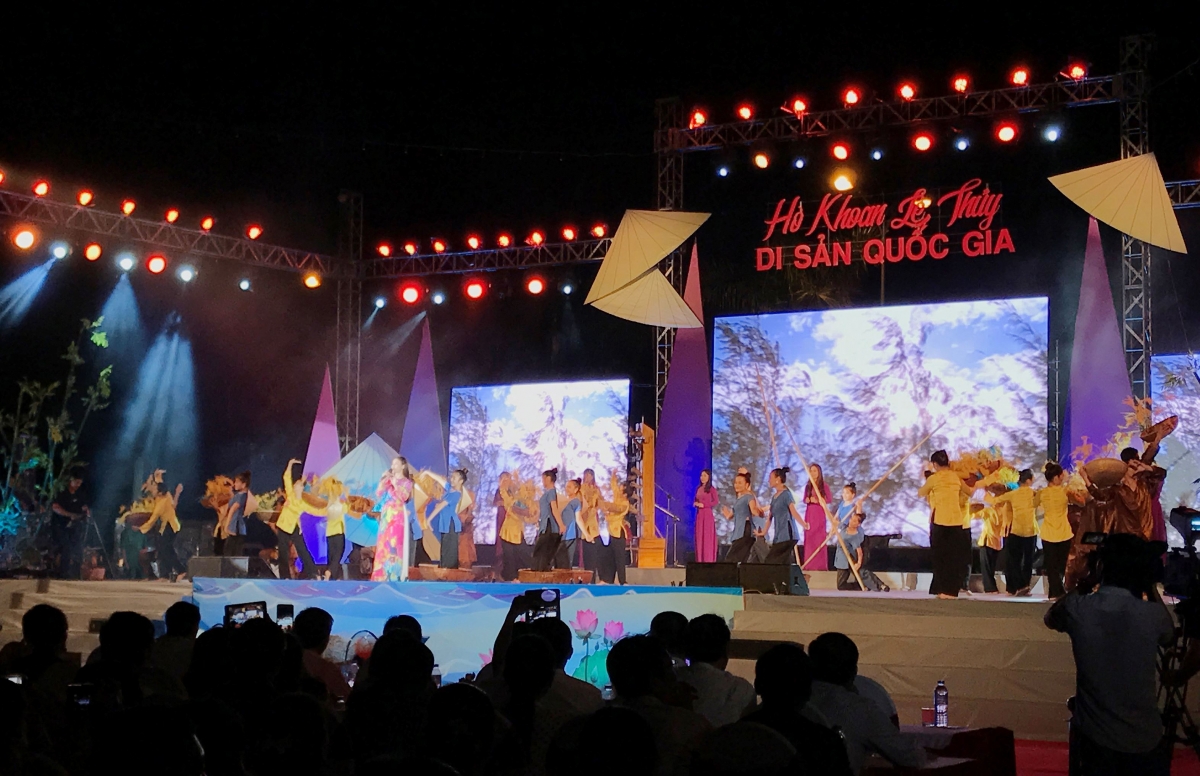
The Traditional Boat Racing Festival on the Kien Giang River
If you happen to visit Le Thuy in early September, you will be swept into one of the most vibrant celebrations of the region: the Traditional Boat Racing Festival on the Kien Giang River, held every year on September 2nd – Vietnam’s National Day.
I still vividly remember the excitement of standing amidst a sea of people crowding both riverbanks from early morning. The beating drums echoed urgently, while cheers of encouragement roared across the water. On the river, colorful racing boats sliced through the waves, their strong rowers straining every muscle to push the boats forward. Every time a team surged ahead, the crowd erupted in thunderous applause, filling the air with electric energy.
This festival is a centuries-old tradition of Le Thuy. According to local legend, it began as a way for the people to give thanks to heaven and earth for favorable weather and good harvests. Every summer, the Kien Giang River would dry up, but by August, floodwaters returned, bringing fertile silt to the fields and washing away pests – a blessing for the crops. To celebrate, villagers organized boat races where young men trained their strength and showcased their rowing skills.
After the August Revolution of 1945, the festival took on even greater meaning. On September 2, 1946, exactly one year after Vietnam’s Independence Day, Le Thuy held its first district-level boat race to celebrate the nation’s freedom. Since then, every year on National Day, the sound of drums and cheers has once again echoed across the Kien Giang River, turning it into a living stage of history and tradition.
Today, the Le Thuy Boat Racing Festival has become an irreplaceable cultural treasure for locals and a fascinating attraction for visitors to Quang Binh. On festival day, male and female teams from villages across the district gather to compete, creating an atmosphere of unparalleled excitement. Regardless of the results, the people of Le Thuy are proud to preserve this tradition – a celebration of health, unity, resilience, and love for their homeland.
For travelers, this is not just a spectacle, but a truly immersive cultural experience, a testament to the enduring vitality of Vietnam’s intangible heritage.

Bang Hot Springs and the Refreshing Nuoc Lanh Stream
Leaving behind the festive atmosphere of Le Thuy, I journeyed westward into the wild beauty of the Truong Son Mountains, where nature reveals some of its most magical treasures. Hidden deep in the forest lies Bang Hot Springs – a rare gift from Mother Nature to this land.
Bang is famous as the hottest natural hot spring in Vietnam, with temperatures reaching up to 105°C (221°F) – hot enough to boil an egg. Along the stream, jets of mineral water gush from the ground, sending up misty clouds that linger like smoke over the emerald forest. The scene feels almost otherworldly, as if nature itself is breathing.
The spring water here is rich in bicarbonate minerals, known for their therapeutic properties, especially for skin care and joint health. Today, Bang Hot Springs is being developed into the Bang Onsen Spa & Resort, where visitors can enjoy a Japanese-style onsen bath. Immersing yourself in the steaming mineral water while gazing at the surrounding mountains is an experience that blends relaxation with awe – truly unforgettable.
In contrast to the fiery heat of Bang, the Nuoc Lanh Stream (“Cold Water Stream”) invites travelers with its crystal-clear, cool waters flowing gently through the forest. Located about 40 km southwest of Dong Hoi, at the border of Ngan Thuy (Le Thuy) and Truong Xuan (Quang Ninh), this small stream runs year-round over moss-covered rocks, weaving its way under the shade of pristine forest canopies.
During summer, it becomes a refreshing retreat: you can swim freely in the transparent, icy-cool water, listen to birdsong echoing in the trees, and hear the soothing rustle of leaves in the mountain breeze. Sometimes, colorful forest butterflies flutter down to the water’s edge, adding a touch of poetry to the landscape.
Nuoc Lanh Stream has now been developed into an eco-tourism site, with convenient access and basic services such as camping rentals, life vests, and kayaks. Yet, it still preserves its pristine charm. Few things are more delightful than sitting on a sun-warmed rock by the stream, enjoying a simple picnic, and surrendering yourself to the peaceful embrace of nature.
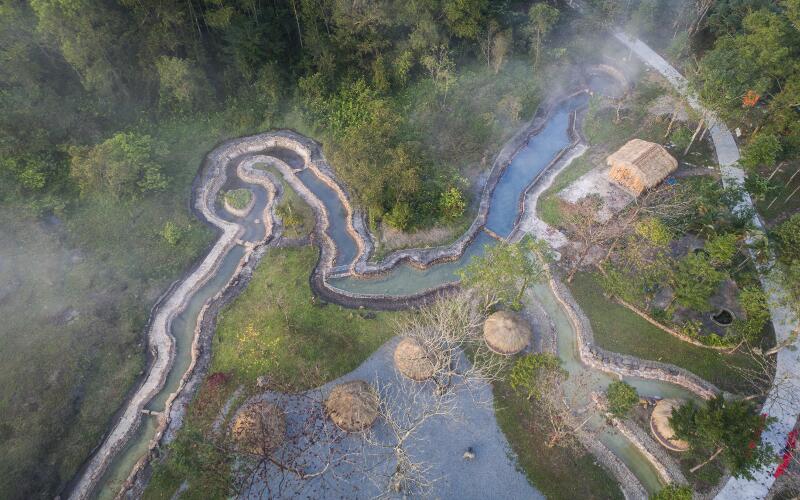
Dong Chau – Khe Nuoc Trong Nature Reserve
Continuing southwest of Le Thuy District, I arrived at the Dong Chau – Khe Nuoc Trong Nature Reserve, a vast wilderness that was officially established as a protected area in 2020. Covering more than 22,000 hectares stretching from Quang Binh to Quang Tri, this is one of the largest lowland natural forests in Vietnam.
What makes Dong Chau – Khe Nuoc Trong truly special is its rare evergreen tropical rainforest ecosystem – more than 50% of the reserve remains pristine old-growth forest, something almost impossible to find elsewhere in the country. Recognizing its global importance, WWF has listed it among the 200 most biologically diverse regions on Earth in urgent need of conservation.
Walking under the ancient canopy of Dong Chau, I was overwhelmed by the richness of its ecosystem. The reserve is home to hundreds of rare and endangered species. Scientists have documented the presence of gaur, saola, large-antlered muntjac, Truong Son muntjac, Javan pangolin, northern white-cheeked gibbon, red-shanked douc langur, crested argus, great hornbill, and many more. In total, there are 357 species of terrestrial vertebrates, including 76 mammals, 214 birds, and 67 reptiles and amphibians. The area is also recognized as one of Vietnam’s 62 Important Bird Areas (IBA), with several endemic species unique to the Truong Son range. It is truly a treasure trove of Indochina’s remaining biodiversity.
For adventurous travelers, exploring Dong Chau – Khe Nuoc Trong is an unforgettable journey. Eco-tours often include jungle trekking along crystal-clear streams, where you’ll encounter giant ancient trees and hidden waterfalls deep in the forest. With more time, you can even set up an overnight campsite to experience the magic of the jungle at night – the chorus of insects, the scent of wild orchids, and a star-filled sky above.
Dong Chau – Khe Nuoc Trong is not just a nature reserve, but a rare glimpse into what Vietnam’s primeval forests once looked like. It is a perfect destination for eco-tourism, wildlife enthusiasts, and nature lovers seeking to immerse themselves in the wild heart of Quang Binh.
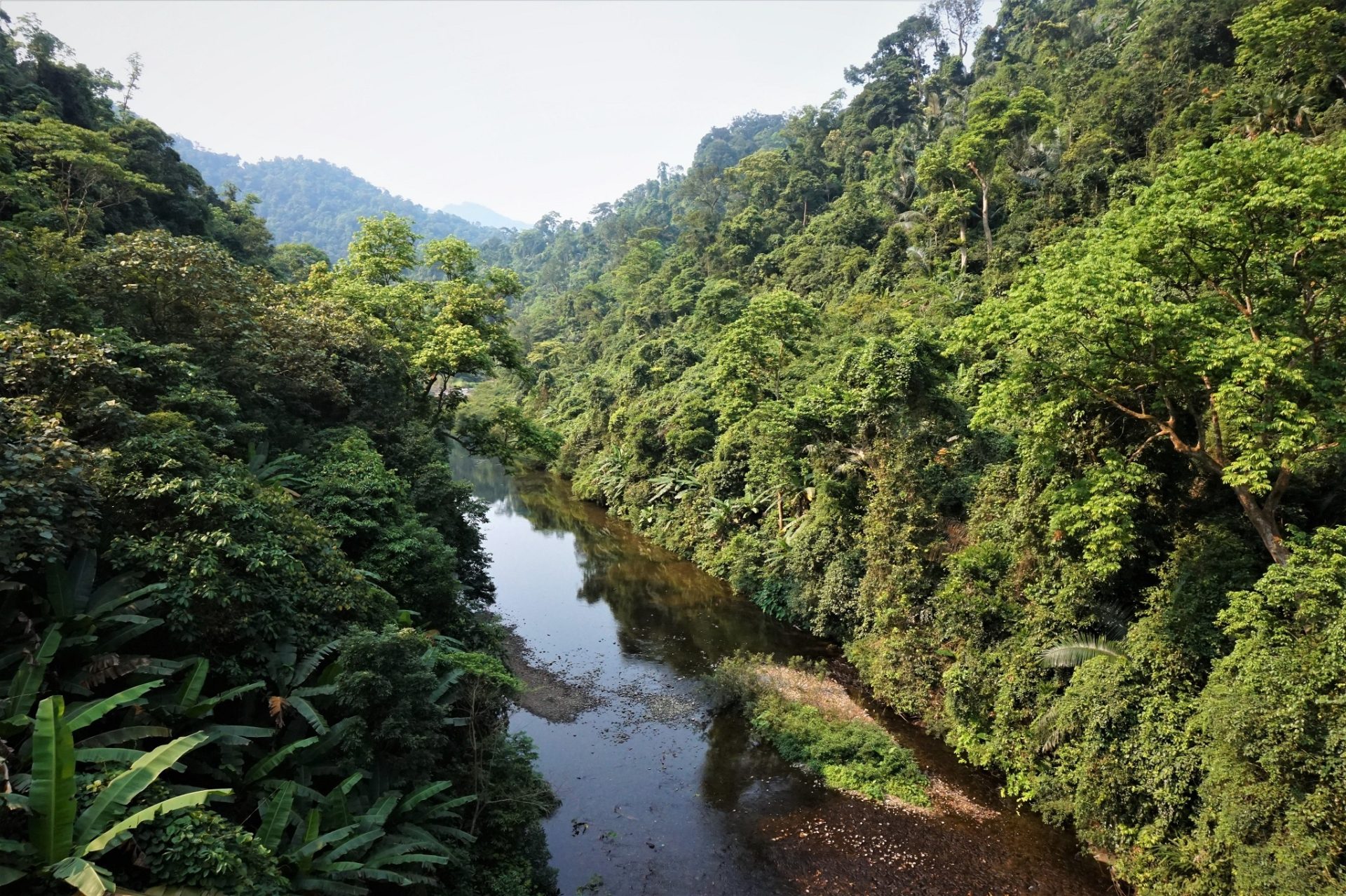
Hoang Phuc Pagoda – A 700-Year-Old Ancient Temple in Central Vietnam
Leaving the mountains behind, I returned to the lowlands of Le Thuy to visit its cultural and historical treasures. My first stop was Hoang Phuc Pagoda, located in Thuan Trach village, My Thuy commune, about 6 km from the district center. This is one of the oldest Buddhist temples in Central Vietnam, with a history of more than 700 years.
Legend has it that in 1301, during his pilgrimage to the South, King-Monk Tran Nhan Tong visited this site to pray for peace and prosperity. At that time, the temple was just a small hermitage named Tri Kien. Later, in 1716, Lord Nguyen Phuc Chu rebuilt it and renamed it Kinh Thien Tu. In 1821, during his royal tour to the North, Emperor Minh Mang stopped here and changed its name to Hoang Phuc Tu, which remains today.
Over centuries, Hoang Phuc Pagoda suffered heavy damage, especially during a devastating storm in 1985 that left it in ruins, with only the gate and a few relics surviving – including an 80-kg bronze bell, a wooden drum, Buddha statues, and incense burners. In 2014, a large restoration project began, funded by local Buddhists and the community. The new pagoda was rebuilt in Tran Dynasty architectural style, with outer and inner gates, a Buddhist tower, and the main sanctuary, on the original grounds of nearly 10,000 m². On January 16, 2016, the pagoda was officially inaugurated and recognized as a National Historical Site, marking the revival of this sacred temple after more than seven centuries.
Today, Hoang Phuc Pagoda has become both a spiritual pilgrimage site and a cultural attraction in Le Thuy. Passing through its solemn three-entrance gate, visitors are greeted by a peaceful courtyard shaded by ancient Bodhi trees. The main sanctuary, with its gracefully curved tiled roof, stands quietly under towering old trees, exuding a timeless charm. Inside, ancient Buddha statues and precious relics – such as the bronze bell and wooden drum – are carefully preserved, testifying to the temple’s long history.
Every year, on the 15th day of the first lunar month, the Hoang Phuc Pagoda Festival takes place, featuring processions, Buddhist rituals, and traditional folk activities that attract thousands of pilgrims and visitors. Standing in this sacred space, listening to the resonant sound of the temple bell, one feels a deep sense of peace and reflection – a reminder of Vietnam’s enduring spiritual heritage.
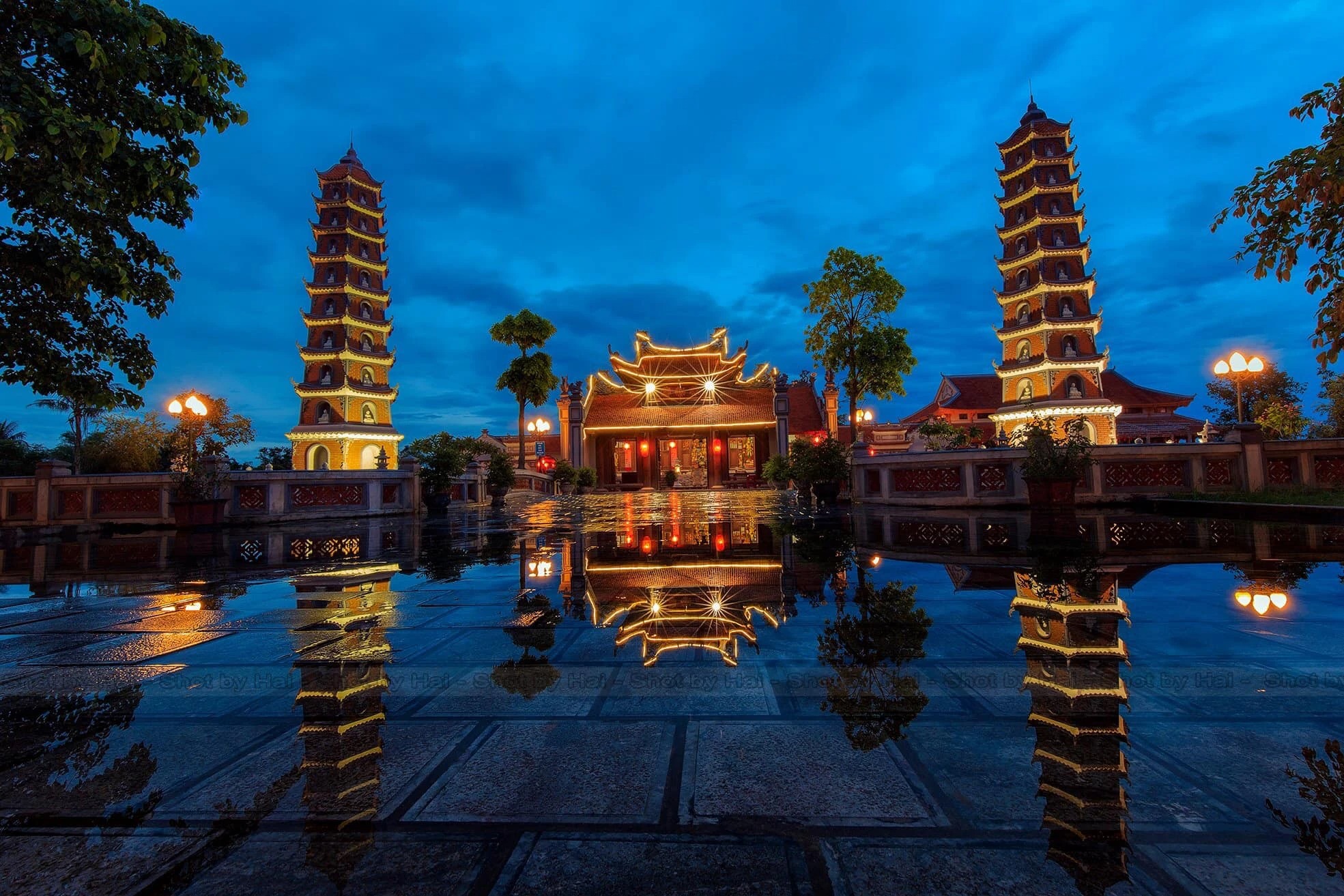
Nguyen Huu Canh Tomb – Honoring the Pioneer of Southern Vietnam
Leaving Hoang Phuc Pagoda, I continued my journey to the Tomb of Nguyen Huu Canh, nestled on a hillside of the An Ma range in Truong Thuy commune, Le Thuy district. The tomb sits in a serene setting – its back leaning against An Ma Mountain, its front facing the gentle Kien Giang River winding through endless rice fields. Shaded by ancient trees, the atmosphere here feels solemn and sacred, inviting quiet reflection.
Nguyen Huu Canh (1650–1700), known by his noble title Le Thanh Hau, was a celebrated general under Lord Nguyen Phuc Chu. Born in Van Ninh village (Quang Ninh, Quang Binh), he is remembered as the man who laid the foundation for Vietnamese sovereignty in the South. In 1698, he was appointed to establish Gia Dinh prefecture (today’s Ho Chi Minh City) – a decisive step in integrating the southern land into the Nguyen domain. Nguyen Huu Canh passed away in Dong Nai in 1700 and was originally buried in Bien Hoa. In 1802, his descendants reinterred him at An Ma Hill, Le Thuy, fulfilling the wish that “fallen leaves return to their roots.”
Through centuries of wars and turmoil, the tomb was long lost. It was not until 1995 that his descendants rediscovered it in the forest and began restoration. In 2013, the tomb complex was rebuilt in a more dignified manner, with impressive green stone architecture. At its entrance stands a memorial house containing a stone stele inscribed in Han script, praising Nguyen Huu Canh as a “national founding figure” who opened the southern frontier for the Nguyen dynasty. Based on the inscription, historians confirmed that the stele was erected by his descendants during the reign of Emperor Gia Long and last restored in 1925. Thanks to this stele, his tomb was identified after centuries of obscurity.
Standing before the tomb, I felt a deep sense of gratitude for this visionary pioneer. From the hilltop, gazing at the sparkling Kien Giang River under the afternoon sun, the story of Vietnam’s expansion to the South seemed to come alive. Today, the Tomb of Le Thanh Hau Nguyen Huu Canh is not only a historical attraction in Quang Binh but also a sacred place where generations come to pay tribute to the man who helped shape the nation’s destiny.
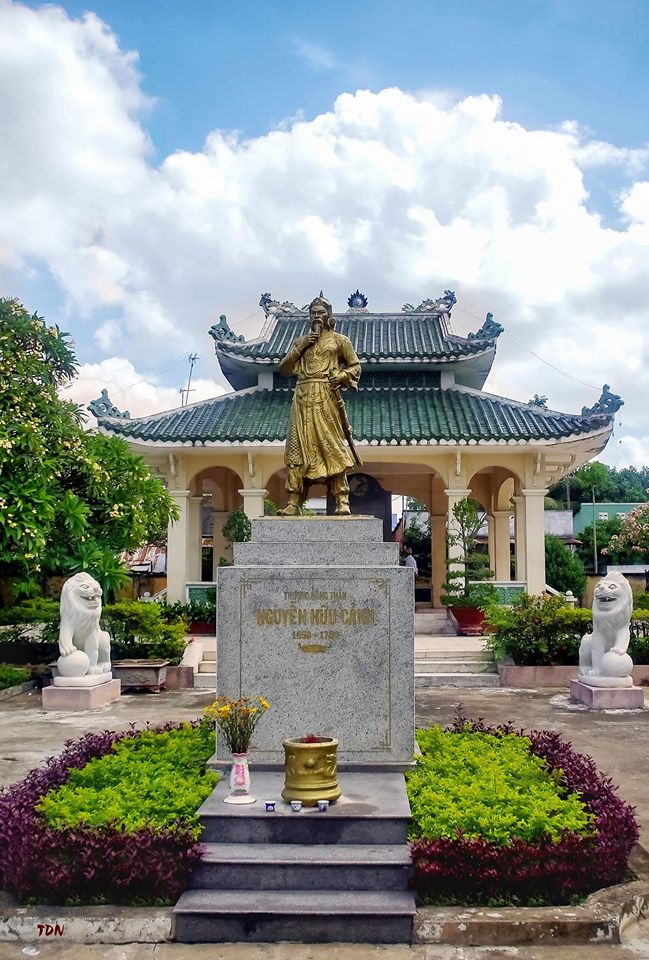
Vo Nguyen Giap Memorial House – The Hometown of Vietnam’s Legendary General
The final stop on my journey was the Vo Nguyen Giap Memorial House in An Xa village, Loc Thuy commune, Le Thuy district. As the birthplace of the legendary General, An Xa has long been a “red address” that draws visitors from across the country. The humble house stands peacefully on the banks of the Kien Giang River, shaded by a centuries-old starfruit tree. It was here, in this simple thatched home, that Vo Nguyen Giap was born in 1911 and spent his childhood before embarking on his path to liberate the nation.
The original family home was lost to time and war, but in 1977, his relatives and the local authorities rebuilt the memorial house on its original foundation. Preserving the style of a traditional three-compartment wooden house, it reflects the modest rural lifestyle of the early 20th century. Inside, visitors can see objects once tied to the young General’s life: wooden tables and chairs, an ancestral altar, family photographs, and old schoolbooks. Each item evokes a sense of simplicity and warmth, a reminder of the humble beginnings of the man who would later become the first Commander-in-Chief of the Vietnam People’s Army.
In 2022, Quang Binh province inaugurated an additional Vo Nguyen Giap Memorial Hall within the garden. Built of precious ironwood with a red-tiled roof, this hall now serves as a sacred place where people come to offer incense and honor the General’s immense contributions to the nation.
Today, the Vo Nguyen Giap Memorial Site welcomes countless visitors, who come to listen to heartfelt stories about the General’s life – from a village schoolboy to a legendary military leader admired worldwide. In the tranquil countryside, under the shade of ancient trees, time seems to stand still, allowing every visitor to reflect and appreciate the extraordinary legacy of General Vo Nguyen Giap.

Tradition and Cultural Identity of Le Thuy, Quang Binh
Like many parts of Quang Binh, the people of Le Thuy district take pride in preserving their cultural heritage. Today, the district is home to three national intangible cultural heritages: Ho Khoan folk singing of Le Thuy (2017), the Traditional Boat Racing Festival on the Kien Giang River (2019), and the New Rice Offering Festival of the Bru–Van Kieu ethnic group (2022). These are not only sources of pride but also strong motivations for the community to safeguard and promote their traditions.
For the people of Le Thuy, Vietnam’s National Day (September 2) is celebrated as a “second Tet holiday” – also known as the Tet of Independence. On this day, no matter how far they live, families return home to reunite, join the crowds watching the exciting boat races, and enjoy festive community activities. This spirit of togetherness has become a hallmark of Le Thuy’s cultural identity.
In the mountainous part of the district, the Bru–Van Kieu ethnic group maintains unique rituals, such as the new rice festival, where villagers give thanks to the gods for a bountiful harvest. Recognized as a national intangible heritage in 2022, this spiritual festival offers visitors a rare chance to witness the sacred traditions of the highland communities.
Besides festivals, Le Thuy preserves many forms of folk arts and village games. In addition to Ho Khoan folk singing, visitors may also encounter the playful Bai Choi folk songs in My Thuy during the Lunar New Year, or join in traditional games like tug-of-war, wrestling, and stick pushing during village festivals. Together, these cultural expressions reflect the warmth, hospitality, and rich identity of Le Thuy’s people.
Travel Tips for Visitors
✨ Visit during festival season: Come to Le Thuy on September 2 to witness the vibrant Kien Giang River boat racing festival – an unforgettable cultural spectacle. Other options include the Hoang Phuc Pagoda Festival in the first lunar month or the new rice festival of the Bru–Van Kieu in late autumn.
🎶 Enjoy local folk arts: Spend time listening to soulful Ho Khoan folk singing performed by local artisans. If you’re lucky, you may also join a cheerful Bai Choi folk show during Tet, full of improvised songs and rhythmic drum beats.
🏯 Explore historical sites: Don’t miss Hoang Phuc Pagoda, a 700-year-old Buddhist temple; the Nguyen Huu Canh Mausoleum on An Ma hill; and the Vo Nguyen Giap Memorial House in An Xa village – all offering deep cultural and historical insights.
🚴 Experience village life: Cycle along the Kien Giang River, visit traditional craft villages such as An Xa (mat weaving), Quy Hau (conical hats), and Xuan Bo (bamboo weaving). Local artisans are always happy to welcome visitors and share their skills.
🌿 Relax in nature & taste local food: Soak in the Bang hot springs, cool off at Nuoc Lanh stream, and enjoy countryside picnics. Don’t miss Quang Binh specialties like banh xeo wrapped in mustard leaves, oyster porridge from Nhat Le River, and the chewy sun-dried sweet potato “khoai deo.”
With its vibrant traditions, welcoming people, and harmonious blend of heritage and nature, Le Thuy promises travelers a truly authentic cultural journey in Quang Binh.
Comments
Comments (Total 1)
Lan Vo
19-08-2025
Related Articles
13-12-2025
Giải mã tên gọi Phong Nha – Kẻ Bàng
26-11-2025
Khe Sanh – A Journey into Memory
05-11-2025
8 Unmissable Instagram Spots in Da Lat
28-10-2025
Beneath the Arch of Scarlet Blossoms
31-07-2025




